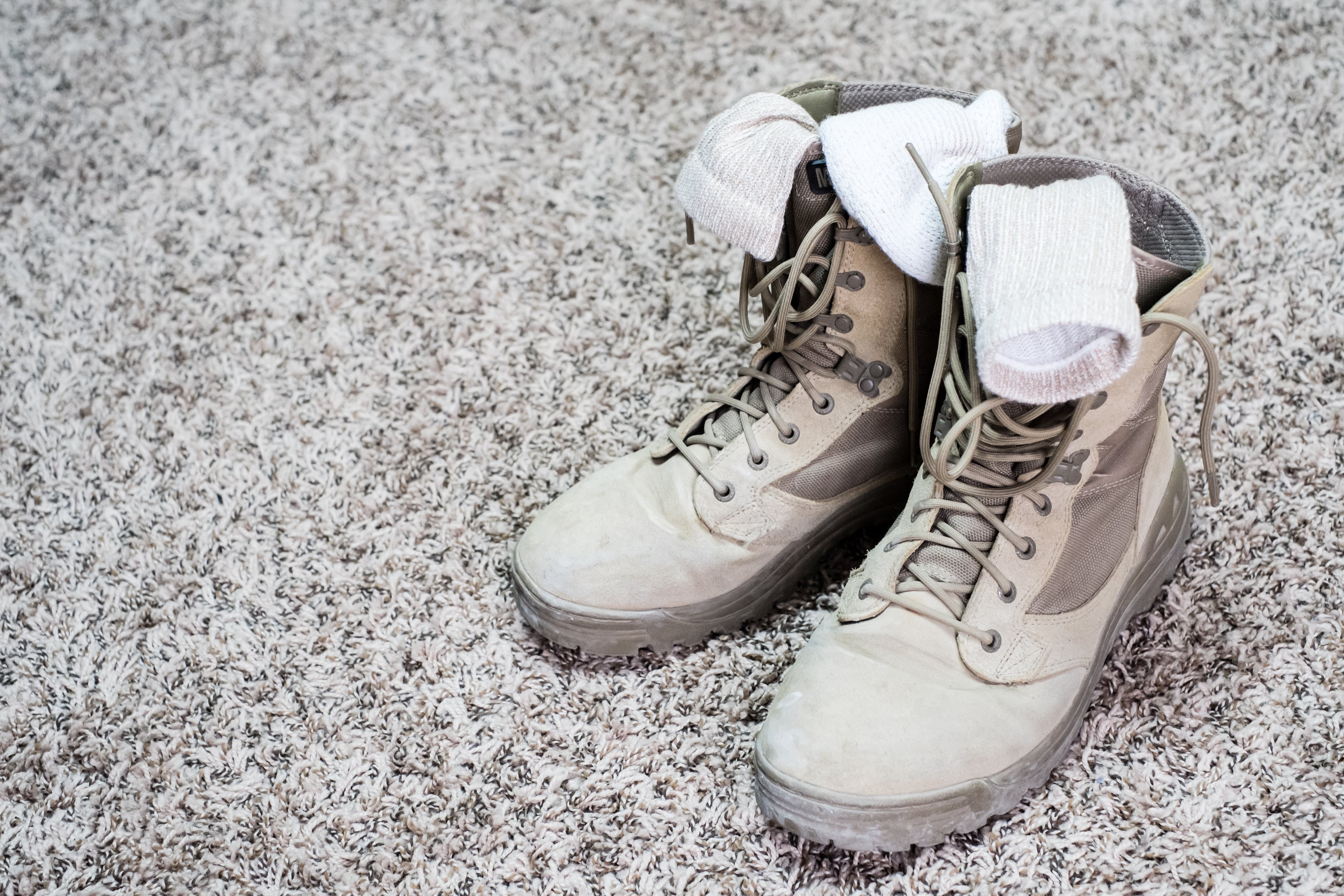If there is one underappreciated piece of gear that can make or break you, it’s your socks.
For anyone who spends long hours on their feet, whose work or play means that your footwear doesn’t come off for many miles or many days, making sure you’re wearing great socks will help keep your feet healthy, and it will help you maintain morale. When your feet feel good, it makes you feel good even in challenging conditions. Whether you want to upgrade your standard-issue socks, or you’re shopping at the exchange on active duty or off, these are our top tips for buying socks, and an overview of our favorite socks for service members and civilians who demand the quality and performance of elite, active duty individuals.
Materials and fit
What your socks are made of
The materials your socks are made of determine how your socks perform, whether that’s merino, polypropylene, or something else.
In general, merino socks are our favorite socks. No other material maintains warmth when wet, and no other material has natural antimicrobial properties. Whether your feet are sweating and you need moisture management, or you’re deployed in arctic cold and you need warm socks to maintain a comfortable foot temperature, merino delivers. It’s a long-staple, natural fiber that comes from sheep. But it’s not itchy like shorter-staple wool. Merino is soft on the skin, long-wearing, and because it’s also antimicrobial, even if you wear the same pair for days, your merino socks won’t stink. Merino excels at thermoregulating. So merino socks keep you warm in the cold, and comfortable in the heat.
Most merino socks are a blend of merino, spandex, and a synthetic to help merino fibers wear longer and to help the socks wick moisture away from your feet. Merino fibers are naturally crimped or coiled, which makes those fibers springy and elastic. So merino socks typically return to their original shape instead of stretching or bagging out. Polypropylene, sometimes called Polypro, is another popular material for socks. It too is warm when wet. Polypro often dries faster than merino. It’s also cheaper than merino. In general, polypro socks cost significantly less than merino ones. Some polypro is made from recycled plastic bottles or recycled ocean plastic. Synthetic fibers like polyester don’t have the same antimicrobial properties as merino unless the yarn or the socks have been treated. They also don’t wear as long as merino socks.
The Army’s standard issue socks are cotton, another natural fiber, and one that’s generally hypoallergenic. Cotton socks are best for casual wear, not performance. Cotton wears out more quickly than synthetic polypro or natural merino, and when it gets wet, it stays wet.
Do I need thick socks?
The conventional wisdom is to pair thin socks with your athletic trainers, choose a medium-weight sock for everyday use, and opt for a thicker sock when you need insulation or warmth. Thin socks are best for use with heavily cushioned footwear like trainers/sneakers or with low-impact footwear like cycling shoes. A thinner sock will be cooler, while a thicker sock will be warmer.
Should I buy socks with cushion?
Some of the bulk of a sock comes from terry loop cushioning strategically woven into the sock in key areas. If your shoes or boots feel hard underfoot, a highly cushioned sock will add shock absorption. Socks with cushioning in the shin will also cut down on pressure from boot laces. If you’re wearing shoes with a lot of underfoot cushion, like sneakers, sock cushioning is less crucial. Cushioning adds air space to socks, which also speeds moisture wicking.
Fit
Socks that fit prevent blisters or hot spots. A well-fitting sock will be snug on your foot not baggy and not constrictive.
Sock height
Optimal sock height depends on what footwear you’re wearing, as well as the temperature and what kind of sock you’re wearing. Choose socks that are tall enough that the cuff stays above the mouth of your shoe or boot. That prevents chafing and assists with moisture wicking. Taller socks can provide more support for your calves. They can also add warmth in cold temps.
Caring for your socks
Most manufacturers recommend machine washing your socks after each wearing and line drying them or drying them on a low cycle. If you’re not able to launder socks between uses, hang them to dry inside out, and rub the cushion loops to bring them back to life before putting the socks on again.
Items purchased through our links may earn us a commission.
Best sock overall
Darn Tough T4021 boot midweight tactical sock with full cushion, $29
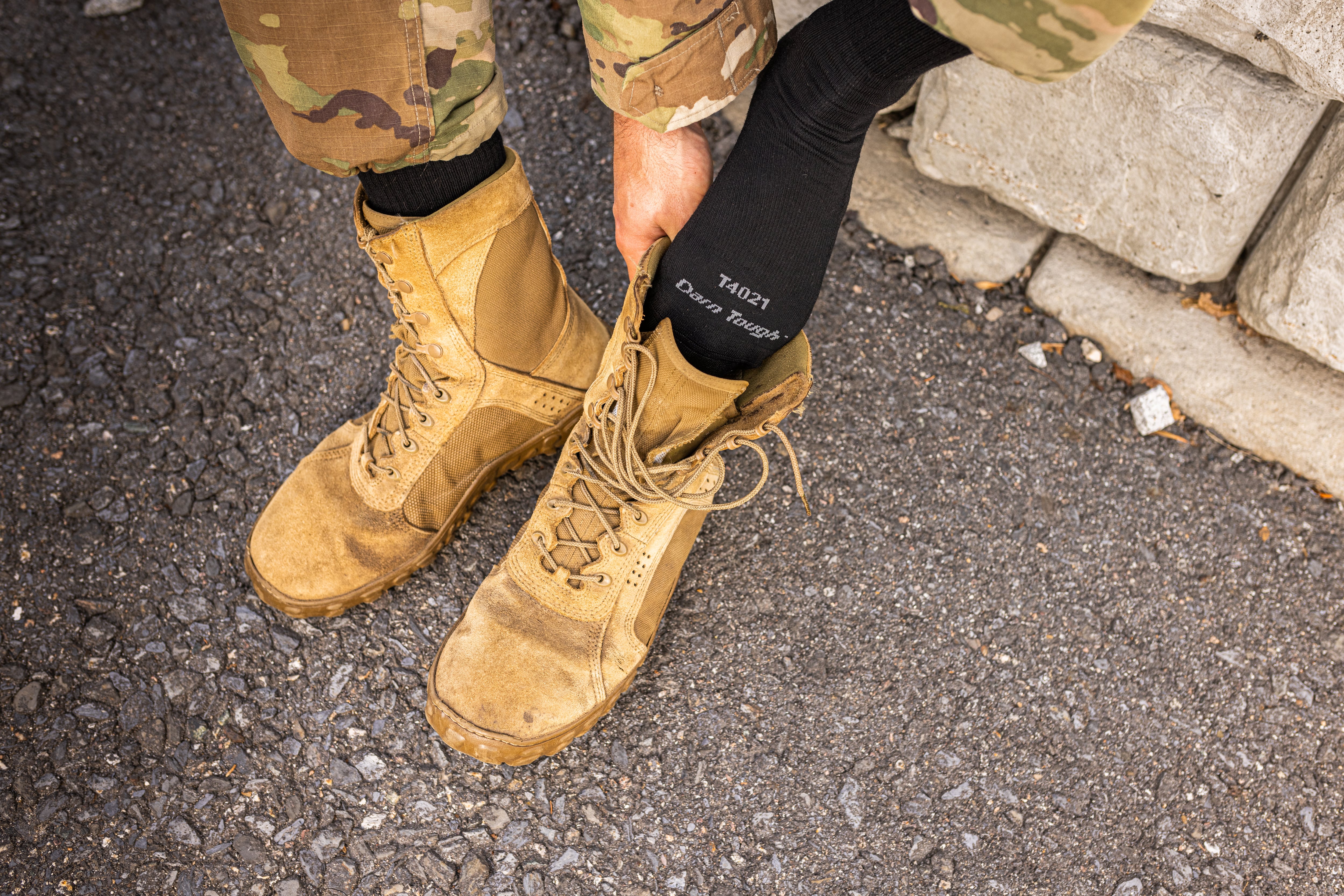
One of the most versatile socks you can buy, Darn Tough’s 11-inch tall boot midweight tactical sock with full cushion is tall enough to wear with a military combat boot, a tactical boot, or a dress boot, and versatile enough to keep you comfortable in moderate to cool climates whether you’re on a mission, or out for a hike with the family. Made from 62% merino wool 34% nylon 2% lycra spandex, the sock has dense terry loops that rebound quickly to keep the spring in your step. Terry loops under your foot, in the ankle, and in the lower leg to reduce pressure from boot laces. Darn Tough reinforces the heel and toe for durability without adding hot spot-causing seams. These socks won’t slip or bunch so you’ll be blister free, even if you wear these for days or weeks on end. They’re Berry Amendment compliant -- knit with merino raised, sourced, and produced in the USA. They’re also US Air Force Safe to Fly certified, they meet flame resistant and “No Melt No Drip” requirements for next-to-skin use under approved flame-resistant combat and utility uniforms. Merino helps your feet temperature regulate, it’s breathable, and it reduces the chance of athlete’s foot and other bacterial and fungal foot infections. All Darn Tough socks are guaranteed durable. Wear a hole in one and Darn Tough will replace the pair free of charge, no questions asked. Whether you’re on-duty and need a uniform-compliant sock, or seeking socks for civilian life, these can’t be beat. For off-duty use, consider Darn Tough’s men’s hiker boot full cushion midweight hiking sock. Both tactical and civilian models are also available for women.
- Buy it at: darntough.com
Best boot sock for off-duty adventures
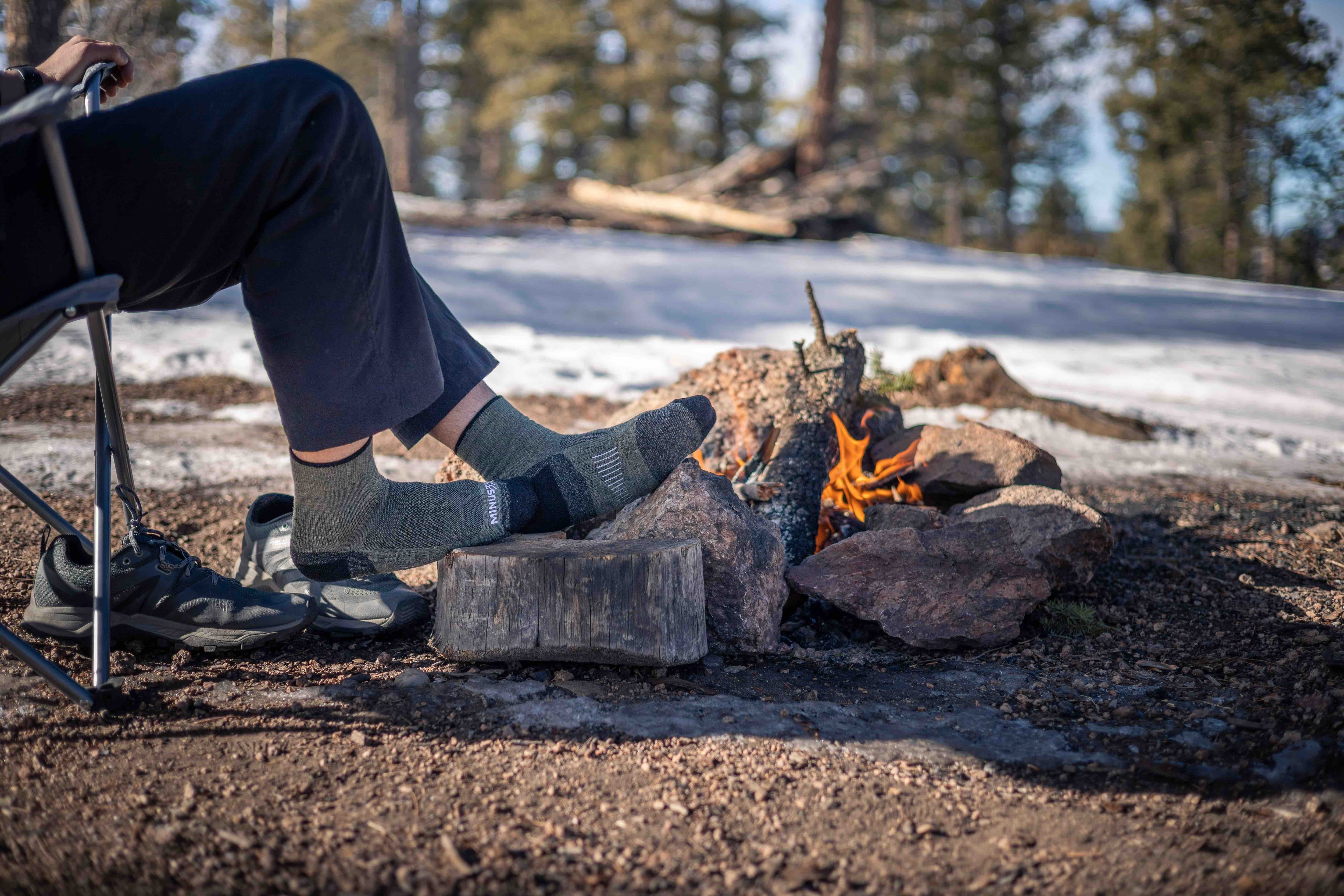
Minus 33 Mountain Heritage full cushion boot sock, $19.50
Made in New Hampshire from Australia-sourced merino, Minus 33′s full cushion boot socks are fully cushioned underfoot for maximum moisture wicking, with three-zone elastic on the arch, ankle, and welt to keep your sock from stretching and bunching as you walk. Venting on the upper part facilitates airflow to cool your feet and keep them fresh. And a seamless, reinforced top and heel enhance durability. In their Mountain Heritage full cushion boot sock, Minus 33 blends nylon with merino for durability and comfort. The socks are mid-calf height for full clearance wearing a standard 10-inch boot. They’re lower bulk than many other boot socks but still have terry insulation throughout.
- Buy it at: minus33.com
Best compression sock
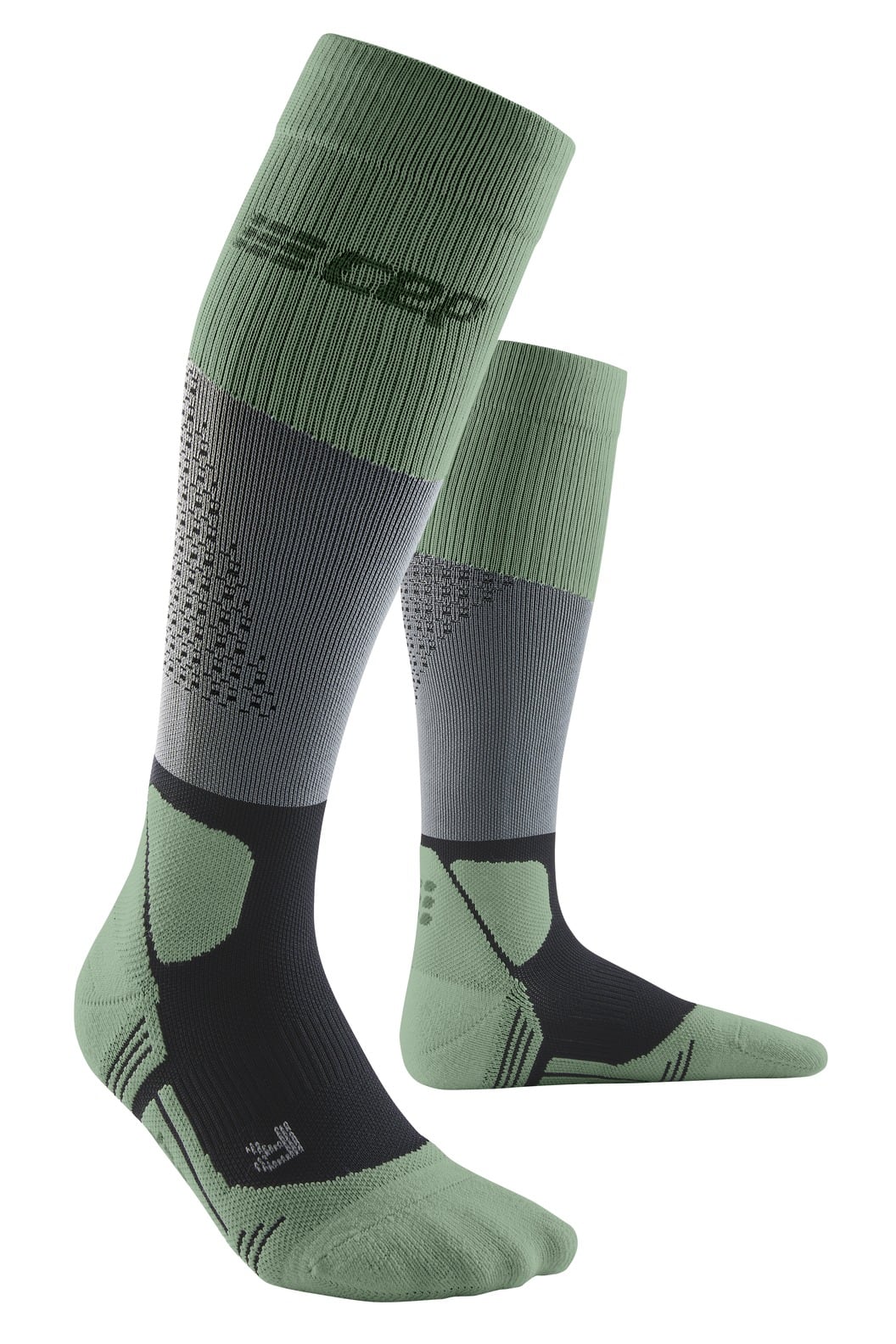
CEP hiking max cushion tall compression socks, $60
The best graduated-compression sock you can buy, CEP’s hiking max cushion trail compression socks have more padding than almost any other compression sock. They deliver full support for your ankle and Achilles to mitigate the toll from long hikes and navigating technical terrain. With 20-30 mmHg compression, these socks boost your circulation to help move lactic acid out of your muscles so you feel fresh longer. Made with merino wool for moisture wicking, durability, and odor control, CEP weaves air channels into the foot and calf of the Hiking Max Cushion Tall Compression Socks to boost breathability and speed moisture transfer. The compression fit stabilizes muscles, reduces foot and leg fatigue, and reduces the chance of shin splints too. They’re 54% polyamide, 38% merino wool, and 8% Spandex to keep your feet and legs feeling as fresh and comfortable as they can be even in extreme environments.
- Buy it at: Cepcompression.com
Best training sock
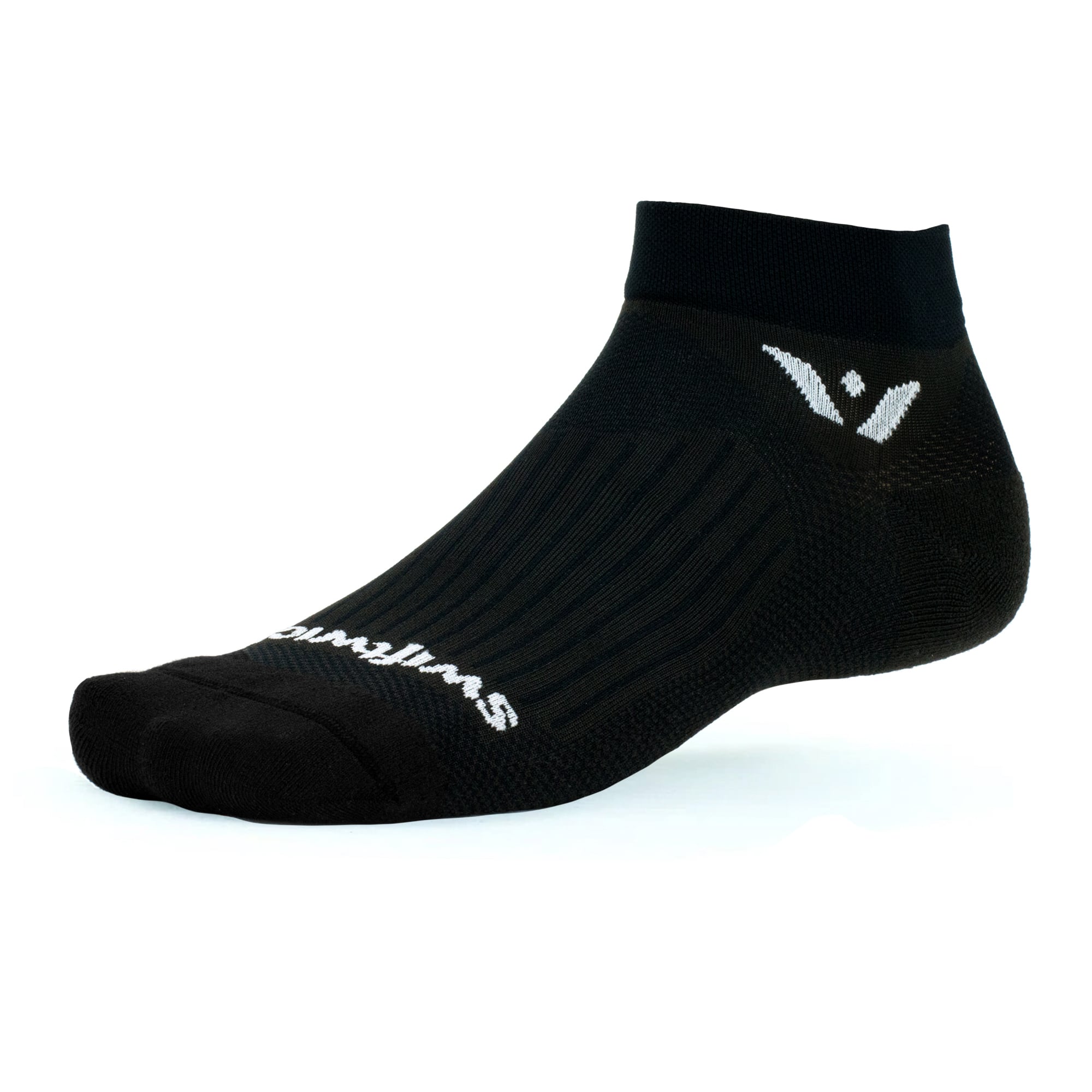
Swiftwick Aspire One, $17
For strength training, gym workouts, running, cycling, and other physical training, a short sock is the best sock. Swiftwick’s ankle-high Aspire One is our favorite training sock that, worn with sneaker-style shoes, meets military requirements for no visible logo. The Aspire One is a thin and form-fitting sock compression sock that’s cut to just above ankle height. A Y-shaped reinforcement in the heel prevents the sock from bunching while also supporting your Achilles. Swiftwick weaves additional support into the sock’s arch to increase your stamina when you’re wearing these socks, so you can shoot more hoops, clock more miles, and record more reps. Made from hydrophobic polypropylene with minimal cushion, the sock has channels in the upper and cuff and a mesh footbed for breathability and moisture wicking, which keeps blisters out of the equation. A double-cuff adds ankle support for cycling and trail running.
- Buy it at: swiftwick.com
Best boot sock for hot climates
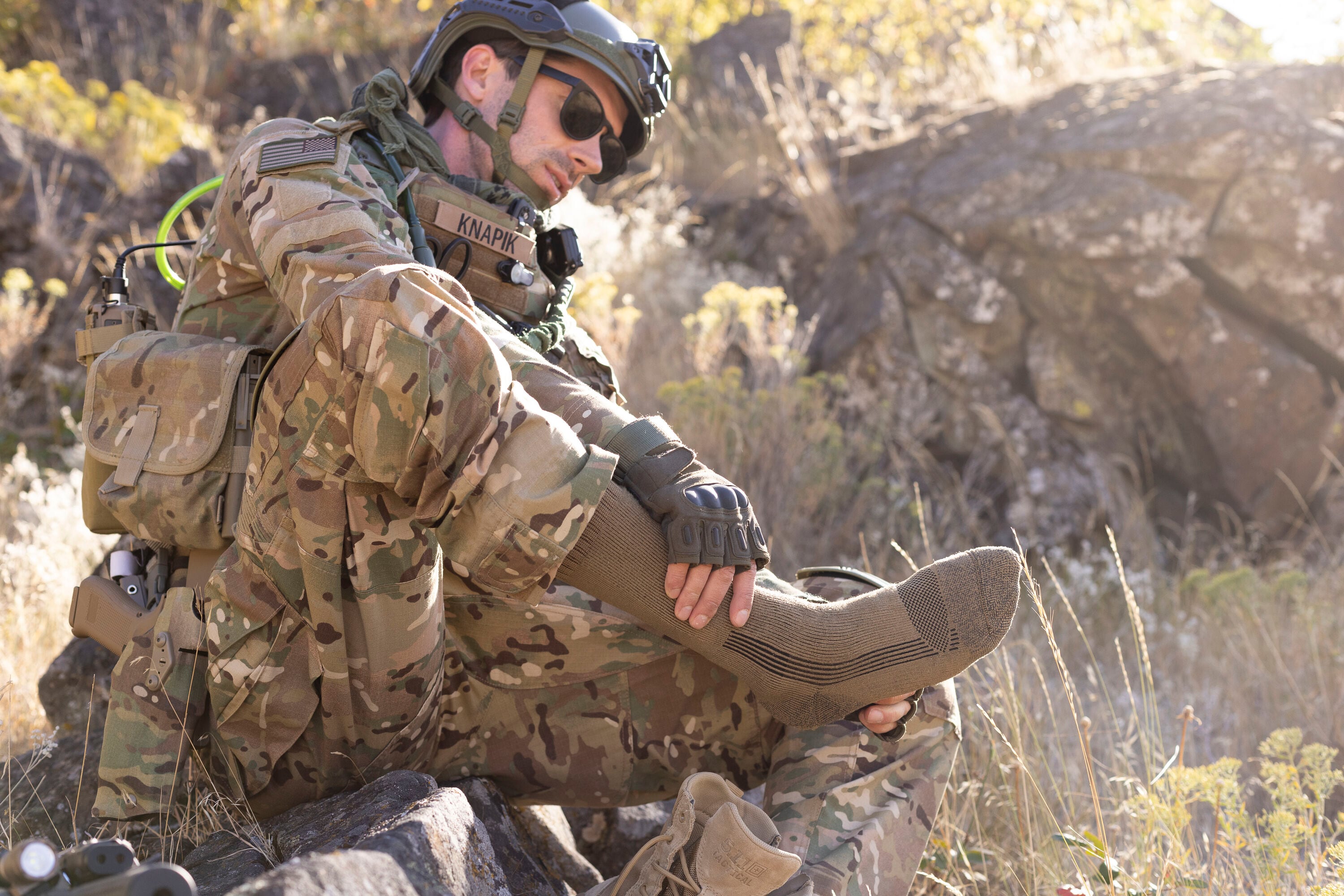
Fox River Mills 6074 military wick dry maximum medium weight mid-calf boot sock, $15
Hot, humid, tropical environments can be especially hard on feet. In those conditions, wearing a sock that keeps your feet dry and as cool as possible is critical for foot health and comfort. Fox River Mill’s military wick dry maximum medium weight mid-calf boot sock fits the bill. The brand’s best-selling combat boot sock is a mid-height polypropylene boot sock loaded with proprietary technology. Fox River treats the socks’ synthetic fibers to enhance their moisture-moving properties and reduce odor, and they weave in a fit system that prevents bunching and wrinkling to keep your feet blister-free. According to Fox River, the current Army-issued sock lasted 2,500 cycles in an abrasion test before holes emerged. Fox River’s 70% polypro, 28% nylon, and 2% spandex military wick dry maximum medium weight mid-calf boot sock lasted 42,000 cycles, or 16 times longer. Those stats confirm that when you wear these socks, you’ll feel good on your feet longer, which will give you peace of mind. And at $15, these socks won’t break the bank.
- Buy it at: foxsox.com
Best Off-Duty Boot Sock
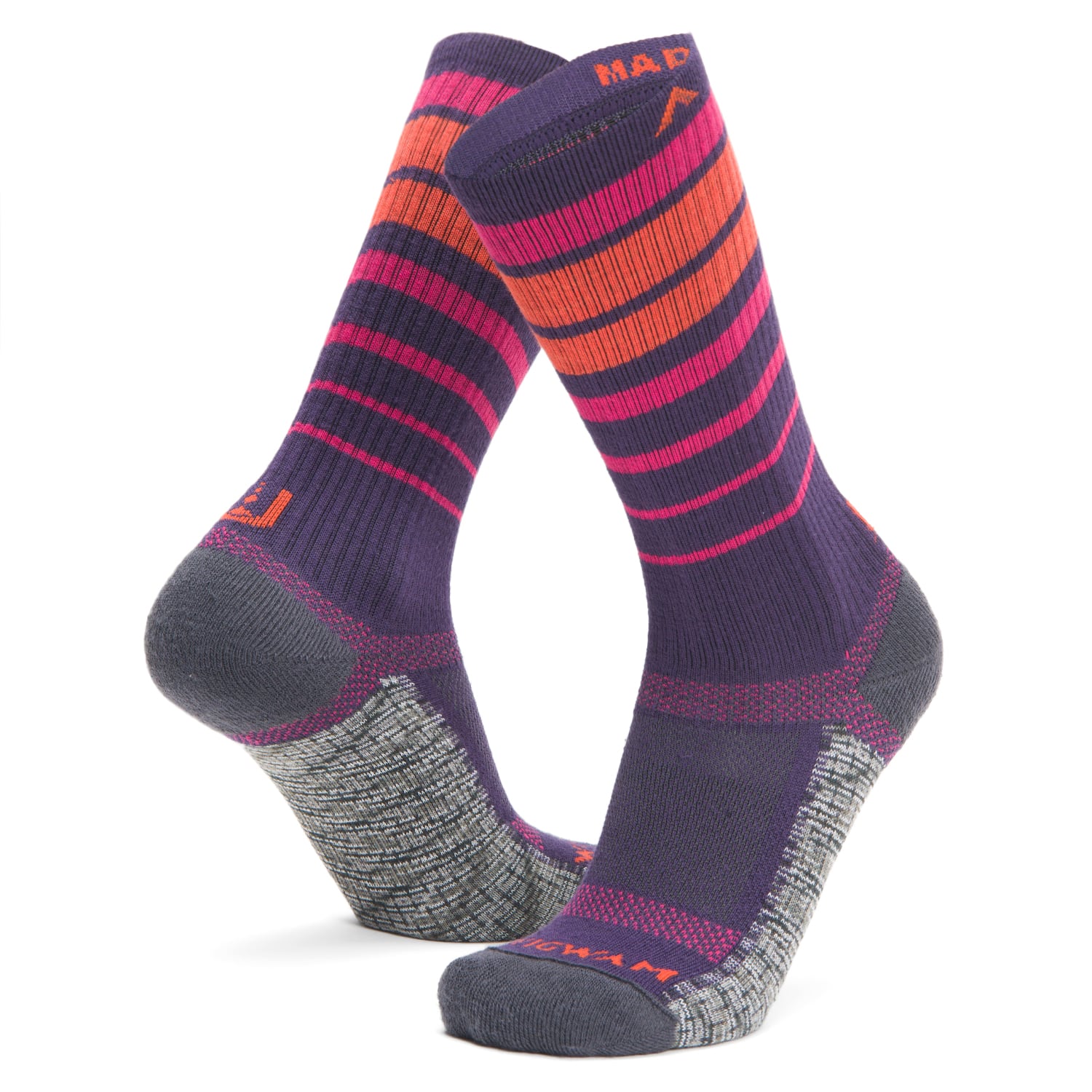
Wigwam Ultra Cool Lite Stripe Ultra-Lightweight crew sock, $17
Knit in the U.S. from materials sources from U.S. yarn spinners, this polyester-nylon-spandex blend sock is our favorite sock for fast and light hikes and everyday wear. The socks, which come in three colors, use Ultimax Tech, Wigwam’s proprietary moisture management construction that channels sweat from underfoot out through the mouth of your boot or shoe. A hydrophobic, moisture-repelling fiber in the foot bottom pulls sweat away from the foot bottom and pushes it to the hydrophilic, moisture-loving fiber on top of the foot and in the leg. As moisture moves up and away from your shoe it evaporates faster, which helps prevent blisters whether you’re playing pickleball or a pickup game of hoops. A more open knit on top of the foot speeds moisture movement. The socks are treated with odor control to keep your feet fresher for longer. For warm weather and varied use, whether you’re wearing shoes or boots, this sock can’t be beat.
- Buy it at: Amazon.com
